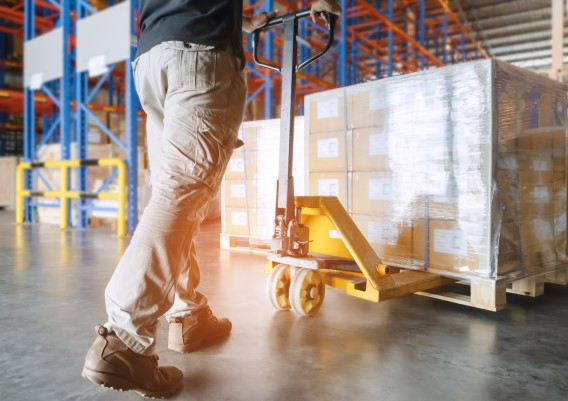11 March 2022
Necessity the mother of invention – five initiatives that help hospitals respond to COVID-19

It’s been over two years since a man in his fifties became the first person in Australia to be admitted to a hospital with COVID-19 on 25 January 2020.
As the number of new cases grew sharply, the patterns of our lives changed as we isolated and turned to and accepted technology-driven innovation to help us stay connected.
Similar to the adaptation and change we have all embraced in our personal and professional lives, the team at HealthShare Victoria has also pivoted its focus in response to the ongoing crisis over the past two years.
As the provider of supply chain and procurement services for Victoria’s public health services, HSV exists to support our public healthcare workers in providing the best care for patients.
Emerging issues arising out of the pandemic environment, ranging from supply chain blocks to operational issues, have required the HSV team to respond swiftly, adopting innovative new approaches and an unprecedented level of collaboration with government and health sector agencies and stakeholders.
Here are some of the initiatives that helped Victorian health services respond to the crisis:
State Supply Chain
At the height of the COVID-19 infection waves in 2020 and 2021, Victoria’s healthcare workers had been using between 900,000 to 1.5 million respirator masks every week. In the early stages of the COVID-19 pandemic the Victorian Government worked quickly to centralise the supply of essential Personal Protective Equipment (PPE) and establish a State Supply Chain (SSC) to ensure ongoing supplies for healthcare workers.
The SSC has been a very successful initiative, helping to manage spikes in demand. HSV continues to work to source and secure PPE stock for the SSC, working with Monash Health – which manages the facility – and fulfilling orders from Victorian public health services and the Department of Health whose focus is on policy, funding and balancing competing demands.
Product Information Library
To support health services in using Personal Protective Equipment (PPE) supplies from the State Supply Chain – some of which were new and unfamiliar to them – HSV established a Product Information Library (PIL) on our website.
Visible only to health services, the library’s search engine is accessible via a quick link located within the My Dashboard area when users are logged into their HSV website account.
The PIL is a hub of information about the effectiveness of Tier 1 PPE items, including every mask available via the SSC. It details approximately 770 products, including different types of masks from multiple suppliers, and has been accessed 5796 times by 872 people since the start of the pandemic. It continues to play an important role in ensuring health services have confidence in the efficacy and safety of the essential PPE and equipment sourced by HSV.
Fit testing
Faces come in all shapes and sizes and fit testing helps a healthcare worker find out which mask gives them the best protection. The Department of Health introduced fit testing into Victorian hospitals in the winter of 2020 after HSV’s Equipment team quickly set up a contract to provide fit testing equipment and service providers.
Fit testing is now an annual requirement and a very important safety initiative. Ideally, healthcare workers should be fitted to three styles to reduce a health service’s dependence on one in the event of product shortage. The fit testing program influences what HSV procures. Fit testing results also help HSV forecast future demand for certain masks in tandem with the ‘burn rate’, which is the volume used each week.
New warehouse for public health goods
HSV’s Derrimut Distribution Centre (DC) opened in December 2021, marking a key milestone in the transformation of Victoria’s health sector supply chain. At 22,500 square metres, it is similar in size to the MCG, with 10 loading docks and space for 24,000 pallets. It currently stocks more than 2000 medical and health-related goods for HSV’s first health service customers, with capacity for the future expansion of HSV’s supply chain services statewide. The DC has also recently become, alongside Monash Health’s SSC warehouses, part of the state’s hub for Rapid Antigen Test (RAT) storage and distribution.
Supply Chain Surety function
The COVID-19 pandemic highlighted the importance of access and surety of supply for critical health-related products. HSV’s new Supply Chain Surety function was established in 2021, reflecting HSV’s strategic focus on surety and planning to mitigate risks. The new function was put to work quickly, with employees working with clinicians, suppliers, stakeholders to mitigate and provide solutions to shortages in sterilisation wrap, cold sterilant, syringes, nutritional feeds and pharmaceuticals for COVID-19 patients.